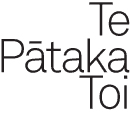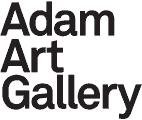Guests and Foreigners, Rules and Meanings (Te Kore)
2 March - 30 April 2000
Joseph Kosuth’s installation Guests and Foreigners, Rules and Meanings (Te Kore) was the fifth in a series, situated in disparate locations: Oslo, Dublin, Frankfurt, Istanbul and Chiba City, Japan. In each case the artist used a specific architectural context and placed within the built space an array of texts that in various ways address the question of being both a ‘guest’ and a ‘foreigner’ in that situation.
For his installation at the Adam Art Gallery, Kosuth explored the inter-relationships between Pakeha and Maori. Playing on the interaction between the texts and the space, Kosuth brought together fragments which suggestively alluded to the ways in which both Maori and Pakeha have mentally and physically occupied this land. He invited viewers to consider the roles language, writing and reproduction play in determining our relation to place and to each other.
A distinguishing feature of these installations is the fact that Kosuth has chosen different textual material for each, in order to particularise the work for that context. Where, for example, in Frankfurt at the Schirn Kunsthalle, on the occasion of the 250th anniversary of Goethe’s birth (1999), Kosuth referred to the time Goethe spent in Italy; and in Chiba City he focused on the period in which Japan cut itself off from the West.
Kosuth never assumes insider status, however, in his response to New Zealand culture and history. For one of his purposes is to acknowledge his own status as both a ‘guest’ and a ‘foreigner’. He therefore juxtaposes local references with material derived from his extensive readings in philosophy, history and anthropology. In this way, he establishes a wider context for the work which is concerned with a broader examination of how cultural forms, mores and practices structure and mediate any apprehension of both individual and shared realities.
All of the texts Kosuth uses are from published sources. As he argues, they are appropriated from a public realm to which the artist has free access. This has been a feature of his work from his very earliest dictionary and thesaurus quotations in the late 1960s. In bringing together these multiple and differing voices, he sought to create an occasion where new meanings can be produced.
Joseph Kosuth is a leading figure in the history of contemporary art. He is a founding conceptual artist whose provocative practice and writings did much to undermine the authority of a self-referential modernism, by turning attention away from the aesthetic value of objects to their linguistic potential as bearers of meaning.
Kosuth is perhaps best known for his use of language as the primary vehicle for, and subject of, his practice. His investigation of how language works, his use of words and texts appropriated from various sources, and his recognition of the contingent relation of meaning to the contexts where it is produced, have all proven vital to a particular kind of critical practice which is a crucial feature of art today.
Through his installations, exhibitions, public commissions and publications he has continuously challenged and provoked us to think about the relationship of language to art and to understand the role that art plays as an intellectual as well as a creative discipline.
Joseph Kosuth was born in Toledo, Ohio in 1945. He studied at the Cleveland Institute of Art, 1963-64; The School of Visual Arts, New York City, 1965-67; New School for Social Research, New York, 1971-72. Since then, he has taught widely, as a guest lecturer and as a member of faculties at the School of Visual Arts, New York City; Hochschule fur Bildende Kunste, Hamburg; and the Staatliche Akademie der Bildende Kunste, Stuttgart. He has been exhibiting since 1967 and his work has been included in innumerable international group exhibitions. Since 1992 Kosuth has also begun working on various permanent public commissions. He has been involved with major projects in New York, Berlin and Sydney and a retrospective of his work in Japan.
Joseph Kosuth’s installation at the Adam Art Gallery was instigated by Christina Barton and organised by the Adam Art Gallery as part of the New Zealand International Festival of the Arts 2000 project.
A substantial book was produced in conjunction with this exhibition, Joseph Kosuth: Guests and Foreigners, Rules and Meanings (Te Kore). Published by the Adam Art Gallery, it includes essays by the exhibition curator Christina Barton, artist Joseph Kosuth and art historian Charles Green. It is available to purchase here



